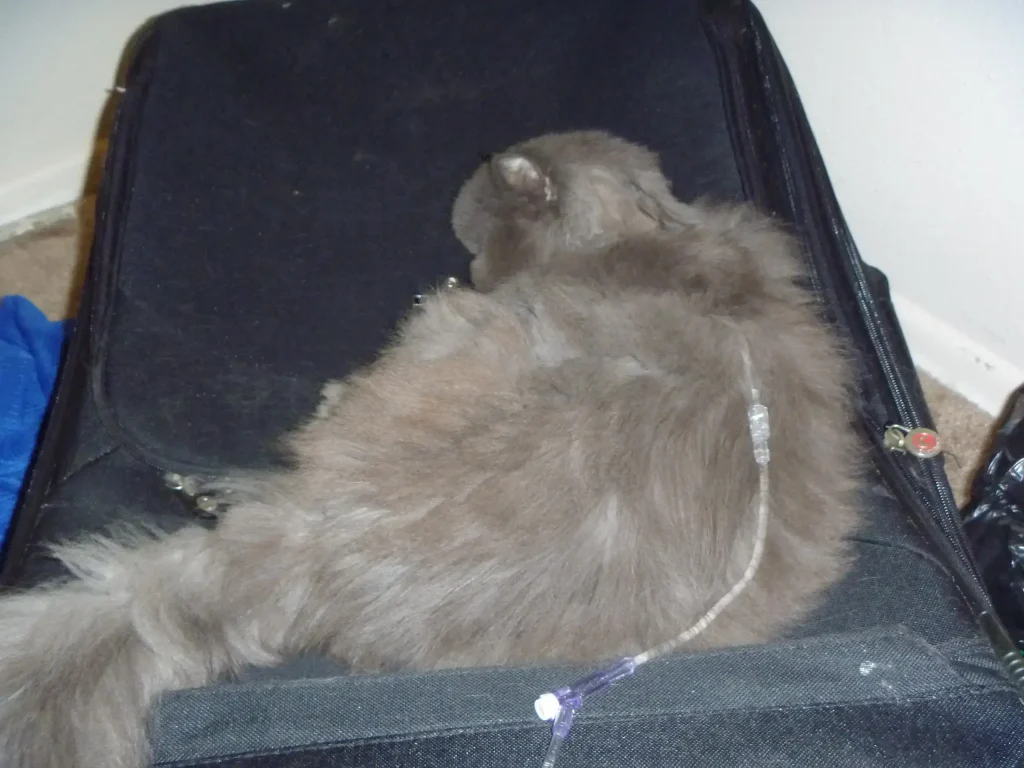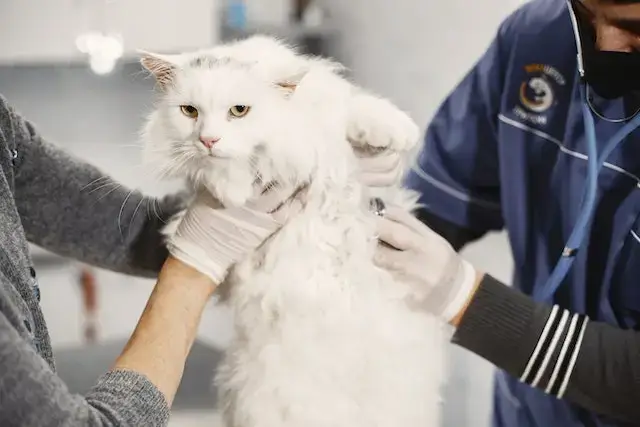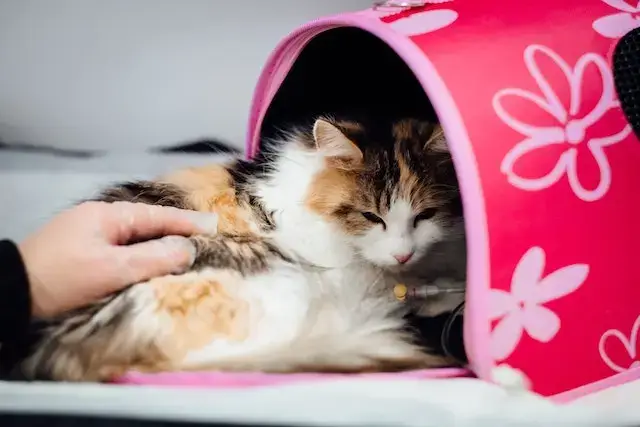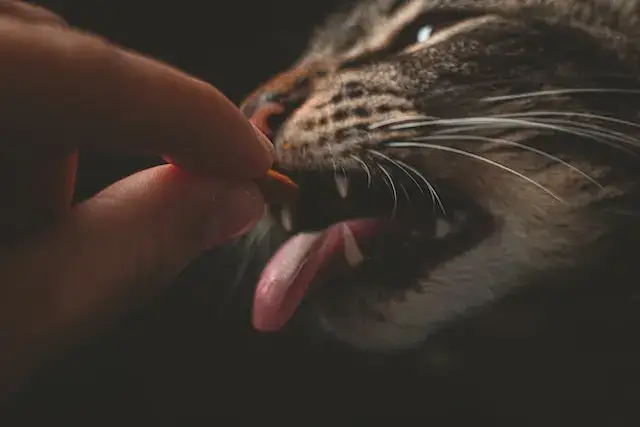How Long Can A Cat Live On Subcutaneous Fluids?
No one enjoys seeing their cat poked with syringes and needles, so if you are on this page right now, we know what you are going through.
First, there is the painful sight of your poor cat that is probably in a lot of pain, and there you stand thinking, “How long can a cat live on subcutaneous fluids?”
That is what has brought you here, isn’t it? In that case, this article attempts to answer some of your doubts and questions.
What Are Subcutaneous Fluids?

This is a kind of liquid therapy to help a cat stay hydrated throughout the day. It is very similar to an IV fluid but much less expensive and much easier to administer than an IV fluid.
This is often administered by veterinarians, though some owners try to get this done at home.
While the process is simple, where all you will need is a syringe and some saline solution, the solution can get absorbed into the body and enter the bloodstream, causing complications.
So, if you are a cat owner considering giving your cat this fluid, make sure that you do it only under the guidance of a veterinarian, as only he knows the right place for the needle.
Why Do Cats Need Subcutaneous Fluids?
Cats can often get dehydrated due to an illness or after surgery. This could be because it is unable to eat or drink. At other times, it could result from the fact that the cat is constantly urinating.
Either way, this can lead to more serious conditions like kidney failure.
According to sources, to help overcome this, subcutaneous fluids as this can give the body the required amount of fluids till the cat recovers and is back in the pink of health.
How Long Can A Cat Live On Subcutaneous Fluids?

This depends on how severely the cat is dehydrated. Some cats may need fluids for a short period of time, such as a few days or a week, while others may require long-term treatment that lasts for several months or even years.
So, if your cat is mildly dehydrated, administering this fluid for a few days would be enough to bring the cat back to health again.
In some cases, cats can get severely dehydrated, and survival may seem impossible, and administering this fluid may be the only way.
Must Read: Should I Trim My Cat’s Whiskers?
What Factors Affect The Life Expectancy Of Cats On Subcutaneous Fluids?
As a cat owner, your biggest fear of seeing your poor creature surrounded by all those needles is that he can leave you any minute, and with that, you want to take every step to see that nothing goes wrong when administering these fluids.
Yet, sometimes things are not always in your hands. That said, the following are some factors that affect the life expectancy of cats on subcutaneous fluids.
- The severity of kidney disease:
Chronic kidney disease is one of the main factors that can affect the life expectancy of a cat under these fluids. This could happen when the fluid is not managed rightly
- Frequency and amount of fluids:
Excessive build-up of fluid can end up stressing a cat and, in some cases, even lead to diseases like edema which can prove fatal. So, remember, while this can be quite a helpful solution, you need to keep an eye on the frequency and amount of this fluid.
- Type and quality of fluids:
Make sure that you are not giving her fluids that contain ingredients like dextrose and other forms of solutions, as these at these times can prove harmful to your cat, even causing a threat to her life.
For this reason, it is important to ensure that the veterinarian provides the fluid, so you can administer it confidently.
- Other health conditions:
Sometimes, a cat may suffer from certain health conditions like heart disease, which, interfering with the subcutaneous fluid, may prove fatal. It is for this reason to administer fluids like this only on the advice of the vet, who knows whether or not your cat should be given this fluid.
- Age and weight of the cat:
These are two very important things to consider when giving your cat subcutaneous fluids. Remember that the amount of fluid you should give your cat depends on these, which you will see later on in this article.
- Cat’s response and tolerance to treatment:
Again, not all cats react well to subcutaneous fluids. Some cats take it in their stride, but for a lot of them, this can be an overwhelming experience that can lead to a lot of stress and, with that, some painful side effects, which, if not checked, can take a toll on his health and in some cases, result in death.
You shall see more on this too later in the article.
How Long Can A Cat Live With Kidney Failure?

Kidney failure is a slow disease that can worsen in time, in some cases, to the point of proving fatal to your cat.
When diagnosed early, the chances of survival are higher. If diagnosed moderately, these cats can make it for a little more than a couple of years.
Yet, know that these are just general statistics, and when it comes to surviving a kidney failure, the chances can be unpredictable with cats, so let’s hope for the best that your cat is soon going to be well and stay with you for almost forever.
How Do Subcutaneous Fluids Help Cats With Kidney Disease?
When a cat is going through kidney disease, the affected kidneys can excrete a lot of water from the body, as a result of which a cat can get dehydrated. In some other cases, the kidneys won’t excrete any water at all, as a result of which a cat can get overhydrated.
Either way, the subcutaneous fluids can be of great help by helping to regulate the water balance in her body.
How Much Subcutaneous Fluids To Give A Cat?
Experts suggest that a dose of 100 to 150 ml would be good. In other words, if you have a smaller cat that weighs about five pounds, the total amount of fluid you give him should come up to 3.5- 4.5 ounces a day, which makes up for half a cup of water.
For a bigger cat that weighs about 10 pounds, you could consider giving more, like about 7-9 ounces, which would make for a cup a day.
However, even at this time, your cat cannot be living only on subcutaneous fluids, as this has not much nutritional value. So, even at this time, make sure that you are doing your best to make your cat eat and drink something.
How Does a Cat Feel After Subcutaneous Fluids?

Cats can sometimes feel stressed as a result of subcutaneous fluids, though there are ways to reduce this. In other words, your cat will need some time to adjust and get used to this new treatment she is going through.
Some of them may go into hiding due to being overwhelmed by this whole process of administering the fluid.
One way to get through this is to make sure that he is surrounded by an environment that is calm, peaceful, and, most importantly, rewarding with a lot of toys and treats to enjoy himself and play with.
And then, give him a lot of love, time, and affection. This may be demanding of you but remember that your cat is going through a tough phase and is at a time when he needs it.
Why Is My Cat Lethargic After Subcutaneous Fluids?
This is one of the few side effects that come with taking subcutaneous fluids, where your otherwise mischievous cat is going to be spending most of the time lying on the floor, giving you some cause for worry.
However, this doesn’t pose much of a problem and lasts for only up to an hour. Though sometimes, this can be a sign that your cat has not been receiving the fluid correctly, more so if it is prolonged and lasts for longer than it should.
In that case, again, make sure to have a word with her vet, and she will let you know if there is something that you should be doing.
How To Monitor And Care For Cats Receiving Subcutaneous Fluids?

Reading up till now, you know that you can’t be too careful when administering subcutaneous fluids to your cat.
But how do you be too careful? Read on, for here are some things you have to do.
- Watch his respiration: Count the number of times he is breathing per minute. If it is anything between 15-30 breaths per minute, she is fine. If it is not, then waste no time rushing her to the vet.
- Keep monitoring her weight: This is very important as dehydration can always take a toll on your cat’s overall weight. If you don’t have a weighing scale, it is time to purchase one, not for yourself this time, but to keep an eye on your cat’s weight.
- Give him water: Don’t let your cat live on subcutaneous fluids alone. The idea is that she needs to be hydrated, and for this, you need to make sure she is drinking lots of water regularly. How much water does she need to drink? This is something that her vet can help you with.
- Check the Fluid: This is one of the most important parts of monitoring a cat under subcutaneous fluids. You need to make sure that the fluid you give him is clean and hygienic. Bacteria and any form of contamination can lead to a serious infection in your cat.
How Long Does Subcutaneous Fluid Last In Cats?
It takes about eight hours for the entire fluid to be absorbed by the cat’s body, and this lasts for about a couple of days.
It is for this reason that this fluid is usually given about once in three days, though some cats (depending on the severity of the condition) may require it every day.
Do Subcutaneous Fluids Make Cats Pee?

Yes, it is only normal that a cat, when going through fluid therapy, will pee more often, but this is only for a matter of time till your cat is back to health.
When she is better, she will start eating right and will eventually be out of treatment, and then she won’t pee at the same frequency.
Recommended Reading: Why Do Cats Lick Their Nose?
Subcutaneous Fluids Cat Side Effects
While subcutaneous fluids can be very helpful in bringing your cat back to health, they can also come with a few side effects, which need to be checked.
Read on to have a look at them.
- Digestive Problems: This is one of the most common side effects of subcutaneous fluids. Some cats can get constipated as a result of being under subcutaneous fluids. Some may suffer from diarrhea.
- Nausea: In some cases, cats may also feel nauseous and weak. In both the above cases, make sure that you have a good word with your vet, who will tell you what your next steps should be and guide you on what you should do.
- Bubbles under the skin: This is another side effect that you may find on giving your cat subcutaneous fluids, making your cat uncomfortable. This can last for a couple of hours, even causing your cat some amount of irritability under her skin.
However, this does not pose a serious problem apart from that, and the bubbles will dissolve in time. Just make sure that you are patient with your kitty when she whines.
Alternative To SUB Q Fluids For Cats

Canned food is one way to increase your cat’s body to the required amount of fluids, as this is usually served by adding water. This way, your cat gets to enjoy a delicious treat and, at the same time, get the required amount of water that is needed in her body.
In other words, try constantly pampering your cat with some water-rich treats that she can enjoy. She is going to love the attention and the treats you give her and will get well soon too.
What Is The Cost Of Subcutaneous Fluids For Cats?
The cost is another matter of concern when it comes to putting your cat under subcutaneous fluids, especially if you are living on a tight budget.
The treatment is not a cheap one and can cost anywhere from $15 to $25.
Also, the cost can greatly vary depending on how much of it your cat needs. For instance, a cat that is going through a chronic condition may require multiple shots, and this may be a burden on an owner financially.
One way out is to ask your vet to give you the required training so you can administer the fluid for your cat while at home.
Some veterinarians even suggest passing the fluid through the mouth to prevent any fatal incidents. This may take a few hours to get absorbed into your cat’s body, but it is more reasonable by way of the price that it comes with.
Whichever way you choose, make sure that you get all the right instructions from the vet, with a demonstration or two if needed.
Frequently Asked Questions
For those of you who directly jump to the FAAs, here are the answers for you.
Q1. How Much Sub Q Fluids For Kittens?
Ans: 15 ml is the required amount of dosage for those who want to give subcutaneous fluids to their kittens. Do not give her anything more than this. Remember that she is still a kitten, and so may not be able to take anything more than this.
Q2. How Long Does It Take For Subcutaneous Fluids To Absorb In Cats?
Ans: It usually takes about eight hours for all the fluid to get absorbed in a cat. And this can last for a couple of days, after which she is probably going to need another dosage if she hasn’t been showing signs of improvement.
Q3. How Often Can A Cat Have SUBQ Fluids?
Ans: This depends on the severity of the cat’s condition. While most owners are recommended to administer the fluid to their cat once in three days, there are some conditions where owners are required to administer this almost every day. This makes it very important for you as an owner to speak to your vet to know the exact frequency with which you can give your cat this fluid.
Q4. Do Cats Feel Better After Subcutaneous Fluids?
Ans: Now, this can depend. Subcutaneous fluids can be of great help for cats going through dehydration, but there are side effects too. It depends on a cat’s condition, the severity of health, age, weight, and various other factors, where the most you can do is be as careful and then hope for the best.
Q5. Gave Cats Too Many Subcutaneous Fluids: Now What?
Ans: If you gave your cat too many subcutaneous fluids, monitor their behavior for signs of overhydration, adjust the dosage, provide supportive care, and follow up with your veterinarian. Symptoms of overhydration include lethargy, vomiting, and swelling. Contact your vet if you notice any of these symptoms.
Closing Thoughts: How Long Can A Cat Live On Subcutaneous Fluids?
So, now that you are in a better position to treat your cat that is under subcutaneous fluids, why don’t you smile?
Worrying too much is going to affect your cat too. She wants to see you happy, and perhaps this will help her get over her sickness better.





